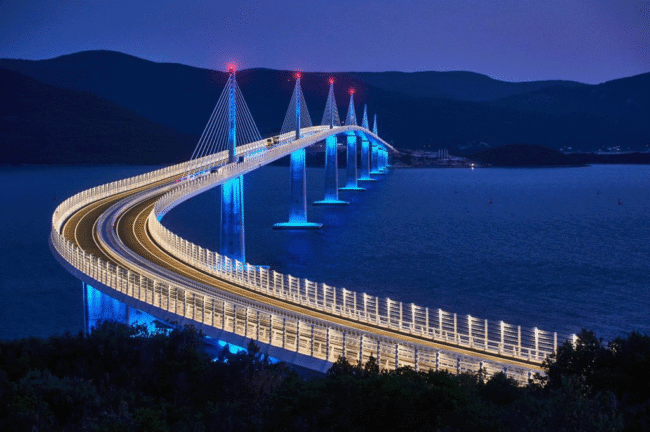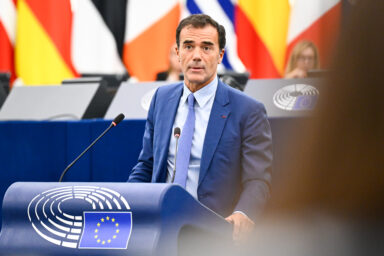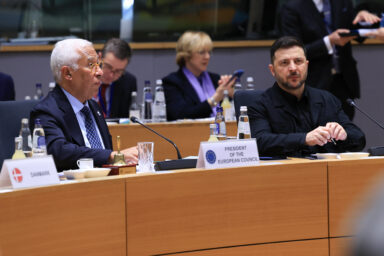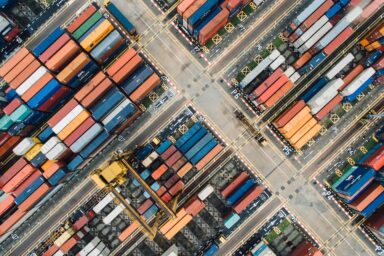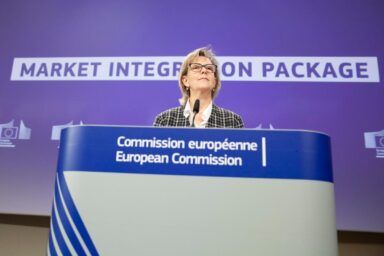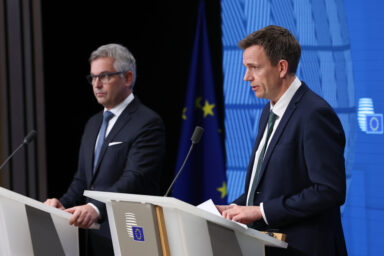Public procurement has long been a showcase of openness, inviting global competition on equal terms. But in recent years, the EU has begun backtracking on that openness as it collides with new geopolitical realities. From infrastructure to medical devices, Brussels is increasingly worried that procurement has, in some cases, become another competitiveness loophole.
The Pelješac Bridge is the largest-ever EU investment in infrastructure in Croatia, connecting southern Dalmatia with the rest of the country’s mainland and cutting travel time by 37 minutes along the Adriatic coastline. Completed in 2022, the bridge cost €420m, of which the EU financed roughly €357m from cohesion funds.
Dubravka Šuica, then Commission Vice-President for Democracy and Demography and now Commissioner for the Mediterranean, praised the bridge as “the essence of the EU’s existence — in bridging and connecting, in creating permanent links built on common values.”
But the bridge has also become symbolic of something else: Europe’s inability to compete globally in the face of China’s rise. By offering a lower price than both the Austrian consortium (€351m) and the Italian-Turkish offer (€341m), it was ultimately the partially state-owned China Road and Bridge Corporation (CRBC) that won the tender with a significantly lower bid of €278m.
You might be interested
As MEP Markus Buchheit (formerly ID; now ESN/DEU) noted, “China was able to undercut all the European bidders for the contract thanks to subsidised state bank loans.”
The EU had paid for the bridge, but China, through its Belt and Road Initiative, received much of the credit. EU funds were effectively helping to finance a boost in China’s soft power on the global stage.
From warning to strategy
Indeed, the European Court of Auditors at the time warned that there was no unified EU strategy to address such problems, as member states were often pursuing their own national interests. The auditors also cautioned that the EU was failing to pay sufficient attention to potential conflicts of interest in large infrastructure projects.
Responding to this issue, the EU launched its Global Gateway strategy, the European counterpart to China’s Belt and Road Initiative, in 2023. The project was intended to strengthen Europe’s global position and challenge China’s dominance by mobilising up to €300bn in investments. Yet, a few years in, European companies are still struggling to fully reap the benefits of this initiative.
Examples like the Pelješac Bridge have, in fact, not disappeared. Since 2019, Chinese companies have been awarded over €1bn worth of contracts for EIB-funded projects in countries outside the EU, representing roughly 13.1 per cent of the total value of third-country contracts attributed to the European Investment Bank. During the same period, EU-based companies have won 15.7 per cent of that total, including tenders involving EU consortiums. Even in 2024, a year after the launch of Global Gateway, Chinese firms won a greater share of EIB-funded contract value than EU companies, Politico reports.
Struggling to compete on price
While an example like the Pelješac Bridge stands out as EU funds directly going to a Chinese state-owned company, it also highlights a broader issue: the EU’s persistent struggle to compete on price. European companies often face higher operating costs and operate within fragmented markets, making it harder for them to match the bids of foreign competitors. EU efforts to improve this, such as completing the single market, investing in innovation and digitalisation, and addressing high energy costs, remain slow.
At the same time, many worry that the problem is further exacerbated by generous state subsidies received by companies from abroad, allowing them to offer unrealistically low prices and undercut EU firms. As a result, Europe’s openness in procurement may at times be a vulnerability rather than a strength, especially when those subsidies are used as tools of industrial and geopolitical influence.
Brussels’ response: tightening the rules
The European Commission’s first comprehensive response came through the Foreign Subsidies Regulation (FSR), which began taking effect in 2023–2024. The regulation gives Brussels new powers to investigate whether firms from outside Europe benefit from foreign state support that distorts competition. Bidders are required to declare foreign financial contributions above specific thresholds, and the Commission can suspend or block deals if those contributions are found to distort competition.
On 20 June 2025, the European Commission also announced a new measure under the International Procurement Instrument (IPI), effectively excluding Chinese firms from EU public tenders for medical devices worth more than €5m. The decision followed a series of investigations launched in 2024, which found that China had long restricted market access for EU-made medical products in its own public procurement.
Under the new rules, tenders involving more than 50 per cent input from China can be disqualified, although exceptions remain possible if no alternative suppliers exist. The Commission meanwhile encouraged Beijing to lift its discriminatory barriers against European medical goods.
What’s next
While measures like these may mitigate the effects of distorted procurement, they are unlikely to address the deeper issue: the EU’s structural lack of competitiveness. For this reason, some experts argue that Europe should not try to compete on price alone, but rather focus on its traditional strengths — such as quality, sustainability, and technological excellence.
Later this week, the EU will host a major Global Gateway Forum, where these issues will inevitably be at the centre of discussion.
